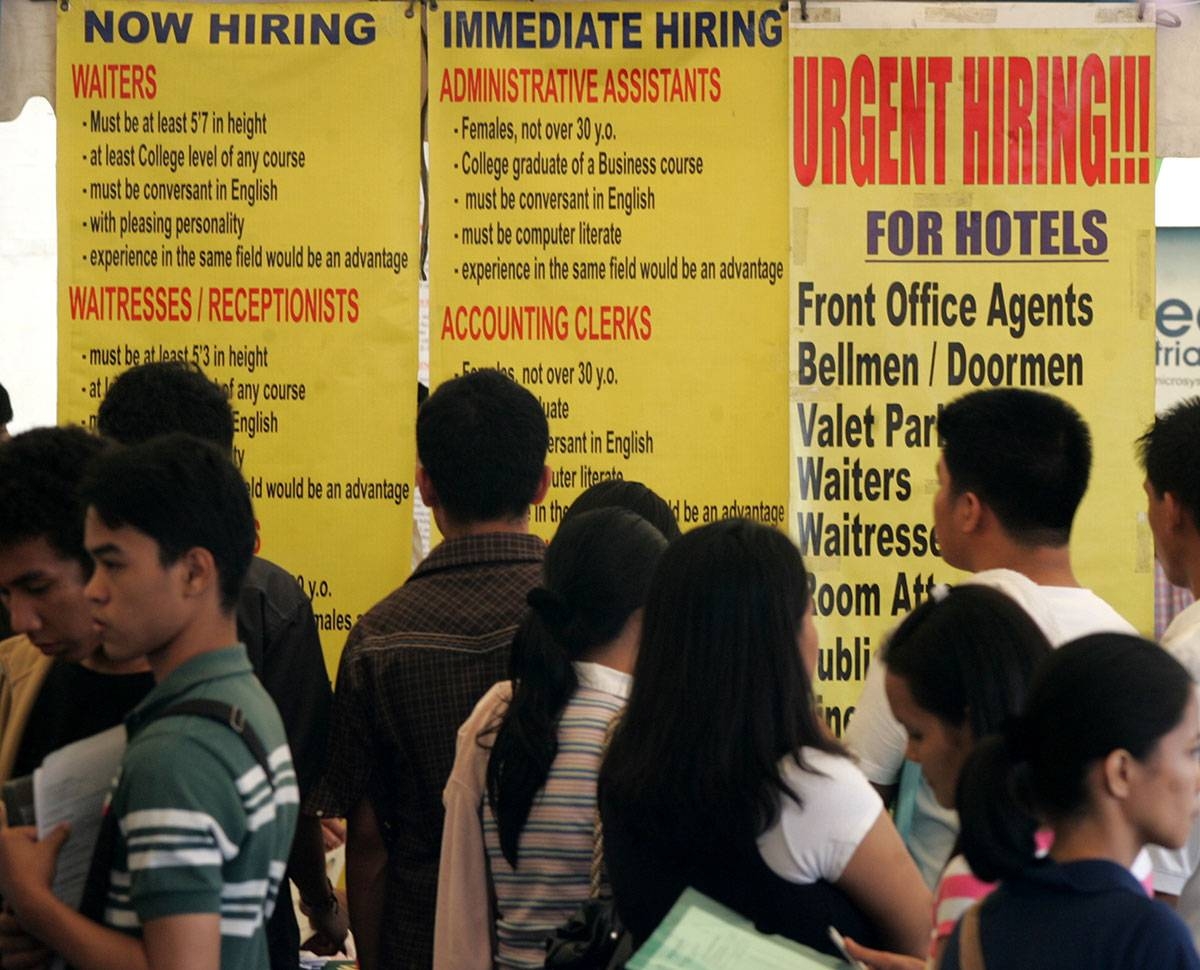(UPDATE) The Philippines’ unemployment rate reached its lowest point since 2005 in October, according to the Philippine Statistics Authority (PSA). The jobless rate dropped to 4.2 percent, down from 4.5 percent in September and 4.8 percent in the same month last year.
This decrease in unemployment translates to 2.09 million unemployed Filipinos, which is lower than September’s figure of 2.26 million. It is also lower than the 2.24 million recorded in October last year, reflecting a year-on-year drop of 15,000 unemployed individuals.
However, underemployment, which includes those seeking additional work or an extra job, rose to 11.7 percent from 10.7 percent the previous month. Nevertheless, it was lower than the 14.2 percent recorded in the same month last year.
The number of underemployed individuals amounted to 5.60 million people, who expressed the desire for additional hours of work in their current job or the need for additional jobs or a new job with longer working hours, as reported by the PSA.
Meanwhile, the employment rate in October reached 95.8 percent, the highest since April 2005. This figure was higher than the 95.5 percent recorded in September and the same month of the previous year.
In October, the number of employed individuals reached 47.80 million, compared to 47.67 million in September. In October 2022, the figure for employed individuals was 47.06 million.
The services sector continued to dominate the labor market in October, accounting for 60.1 percent of the employed persons.
The country’s Labor Force Participation Rate (LFPR) in October decreased to 63.9 percent from 64.1 percent in September and the same month last year.
In response to the latest jobs data, Socioeconomic Planning Secretary Arsenio Balisacan emphasized the importance of “reskilling or upskilling” the workforce while creating an environment that promotes high-quality jobs.
“We can make the labor market more inclusive with the entry of more investments, especially those that bring in new and better technology. At the same time, we need to expand and enhance learning opportunities to ensure that we equip Filipinos for future jobs,” Balisacan said.
He expressed optimism that the positive trend in the labor market will continue following the signing of Republic Act 11966, also known as the “Public-Private Partnership (PPP) Code,” by President Ferdinand Marcos Jr. on December 5.
“The passage of the PPP Code is just one of many recent reforms that have made the Philippines more attractive to foreign investors. It provides the government with a more solid ecosystem for investments, which, in turn, generates employment opportunities for Filipino workers in several critical growth areas, including infrastructure,” Balisacan explained.
Commenting on the labor market, Domini Velasquez, chief economist at China Banking Corp., highlighted the influence of seasonal factors as companies ramped up production ahead of the holiday season. Velasquez expects this trend to persist until the end of the year.
Looking ahead, Velasquez predicts that an improving external environment, particularly the demand for semiconductors and increasing tourist arrivals, will contribute to boosting employment prospects in 2024. She also mentioned that lower production costs among companies and an improving inflation outlook will continue to drive demand.
The decrease in the Philippines’ unemployment rate and the positive outlook for the labor market indicate promising opportunities for job seekers and the overall economy. With continued efforts to enhance skills and attract investments, the country is on track to create a more inclusive and robust labor market.







